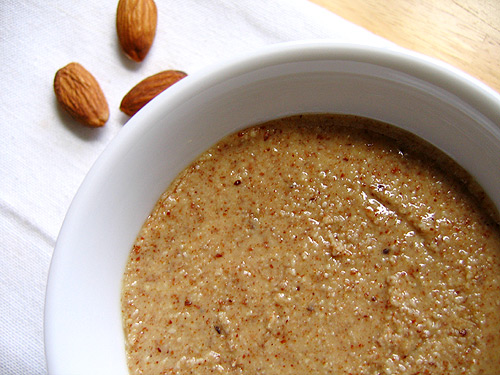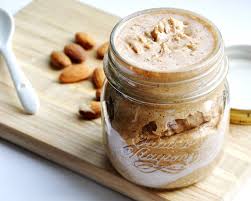Diabetes, hypertension and ever increasing incidence of heart diseases are some of our major concerns today. Prevention of these health problems converges at a common solution, which is a well-balanced diet. Nuts are a delicious component of such a diet and can be consumed in the form of butter. According to the Food and Drug Administration, 1.5 ounces of nuts every day can reduce the risk of heart diseases. The question is which nuts to choose, this brings us to the discussion of almond butter vs. peanut butter.
Almond Butter vs. Peanut Butter: Which One Is Better?


Nutritional Facts
Below mentioned is the comparison of nutritional facts with respect to almond butter and peanut butter.
- Fats
Fats are important for a healthy and balanced diet. It’s hard to believe but some fats are actually good for our health. Among these good fats are monounsaturated fats (MUFAs), which help in lowering blood cholesterol; almond butter is loaded with these. It actually contains 50% more of MUFAs. As opposed, peanut butter containing almost double quantity of Omega-6 fatty acids, which are linked with inflammatory response and increased risk of heart diseases. So, almond butter is the winner here.
- Fiber
Proper fiber intake decreases the risk of chronic diseases. It is good for your heart and overall health. Fiber plays a role in maintaining healthy weight too. According to the Academy of Nutrition and Dietetics, average Americans do not get adequate amount of fiber. It is recommended to take 21-38 grams of fiber daily depending on age and gender. Almond butter contains more fiber as compared to peanut butter. There are 1.6 grams of fiber in 1 tablespoon of almond butter and peanut butter contains 0.9 grams of fiber per tablespoon.
- Vitamins and minerals
The major difference between the two lies in the composition of their micro-nutrients. Peanut butter provides 14% and 22% of our daily requirements of vitamin B6 and B3 respectively, whereas almond butter lacks in vitamin B6 (2%) and B3 (5%). However, almond butter makes up for it with magnesium (28%) and iron (15%), which is twice as much in it as in peanut butter. Almond butter is also rich in vitamin E (28%), calcium (9%) and vitamin B2 (12%), which is three, four and six folds as much as that in peanut butter respectively.
- Proteins
Almond butter and peanut butter contains almost the same quantity of proteins i.e. 3.5 grams and 4 grams per tablespoon respectively. Peanut butter is slightly better with protein content on this round.
- Calories
Both almond butter and peanut butter provide with exactly the same number of calories per tablespoon i.e. 95 calories.
Other Factors
- Contamination
Both spreads can be contaminated with a bacterium called salmonella. However, as nuts almonds are naturally provided with a harder shell that protects it against contamination, whereas peanuts are more susceptible to bacterial contamination.
- Price
Cost comparison of almond butter vs. peanut butter indicates that almond butter tends tobe more expensive, considering all the famous brands present with a price difference of at least 3-4 dollars of the two.
- Taste
Both almond and peanut butter are palatable though favoring different food combinations. Peanut butter and Jell-O sandwiches will always have their own delicious spot in the picnic basket, just as the almond-pineapple smoothie is irreplaceable. Cooking experts believe that spicy foods work better with the salty tinge of peanut butter, but it does not combine as well in smoothies as almond butter does.
- Availability
When it comes to availability, peanut butter is more readily available in shops and hence more commonly consumed than almond butter. On the other hand, peanut butter is commonly produced with extra sugar, salt, and preservatives. These additives increase shelf-life of the product, but regular consumption of such processed butter is linked to increased health risks, especially concerning blood pressures and obesity.
Conclusion: with the comparison of nutrition and other factors of almond butter vs. peanut butter, we can conclude that while they both have a place in a balanced diet, almond butter is slightly healthier.
How to Make Your Own Almond Butter

Rather than buying almond butter from a limited number of stores, you can try making it at home following these simple steps.
Ingredients:
- Almonds (raw or roasted) –2 cups
- Salt –to taste
Directions:
Almond butter can be made with either raw or roasted almonds but it is important to note that raw almonds take longer to breakdown.
- Line a baking tray with butter paper and spread out 2 cups of raw almonds.
- Bake at 375°F (191°C) for 6-8 minutes until a darker brown shade is obtained. Check your roasted almonds for scent or taste of burning.
- Allow to cool but not completely, while still warm add the almonds to a blender and blend until a creamy spread is obtained.
- Stop the blender every few minutes to scrape off the mixture from the sides of the container and push it down.
- When the desired texture is obtained, add a pinch of sea salt and blend to combine.
Your almond butter is ready. This spread can be stored in an air-tight jar for up to 2 months. Flavors like honey, maple syrup or vanilla can be added in the spread if desired, but this will decrease the shelf-life of your almond butter.
